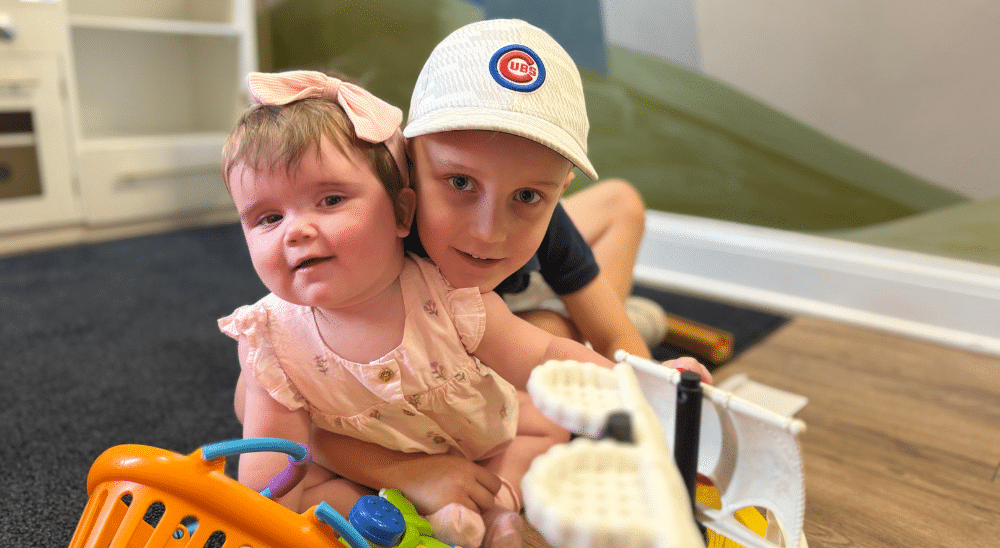Parents of children with Sensory Modulation Disorder (SMD) face unique daily challenges that are often overlooked by others. They live in a constant state of alertness, trying to prevent negative reactions. Simple outings can become impossible, and many children feel overwhelmed by sounds, lights, and movements. Families often feel helpless and trapped by circumstances beyond their control.
Despite the rising prevalence of sensory processing issues, with established research indicating up to 1 in every 6 children face chronic sensory struggles, pediatric medicine continues utilizing outdated views. Many doctors still maintain that children will outgrow sensitivity extremes or eventually meet developmental expectations.
Yet emerging evidence and clinical experience reveal more responsive solutions for sensory disorders like these, transcending the medical status quo. New approaches addressing root causes can help children overcome chronic overwhelm, equipping families with clarity and better options.
In this article, we’ll examine sensory issues in adults and children, potential causes, and the relief that Neurologically-Focused Chiropractic Care can provide for families.
What Is Sensory Modulation Disorder?
Sensory Modulation Disorder involves dysfunction in how the nervous system perceives input from the senses, processes and integrates that stimuli, and then coordinates appropriate responses. While most people filter and interpret sensory data effectively, children with Sensory Modulation Disorder struggle to regulate their reactions, feeling painfully overstimulated or underwhelmed.
The prevalence of Sensory Processing Disorder is growing rapidly, with sensory issues in adults affecting about 20% of the global population and about 5-16% of kids. That equates to 1 in 6 children who live with chronic sensory processing challenges every day.
Yet, against these statistics, traditional pediatric medicine continues overlooking neurological factors, claiming children need behavioral intervention to outgrow sensitivity extremes.
Common signs of Sensory Modulation Disorder include:
- Extreme adverse reactions to sounds, textures, smells, or visual stimuli
- Failure to respond to injury from excessive sensory seeking
- Frequently covering ears or eyes to muffle input
- Enhanced interest in spinning, rocking, or other self-stimulatory behaviors
- Picky or erratic eating habits from oral sensitivities
- Emotional meltdowns and outbursts to sensory overload
While sensory modulation dysfunction manifests differently across children, common patterns emerge where kids habitually overreact to certain stimuli while underresponding to others.
These pervasive neurological differences contribute to associated conditions like Sensory Processing Disorder and Attention Deficit Hyperactivity Disorder (ADHD), fueling anxiety and behavioral and social impairments that detract from quality of life without appropriate care.
The Impacts of Sensory Modulation Disorder
The neurological differences underlying sensory modulation dysfunction substantially impact children’s overall development and real-world function without appropriate support.
Research indicates children with Sensory Modulation Disorder demonstrate higher rates of speech delays, low muscle tone impairing gross motor skills, and oral sensitivities disrupting feeding. Fortunately, early therapeutic intervention concentrating specifically on sensory integration has a significant positive impact.
It’s well documented that kids with Sensory Modulation Disorder struggle with reading interpersonal cues, withdrawing, or acting out. Emotional dysregulation fuels distress intolerance, impeding self-soothing abilities.
Academically, these children quickly feel overwhelmed by classroom sensory stimuli. Struggling to filter distractions, lock focus, or complete assignments, they demonstrate substantially lower performance and overall achievement. Supportive environments accommodate sensory needs so children can learn.
Sensory Modulation Disorder Causes and Risk Factors
While genetics contribute partial risk, they cannot account for exponential increases in chronic sensory disorders. We must look at environmental factors that interfere with proper nervous system development at the beginning of pregnancy.
Maternal emotional trauma, chronic stress, infection, and inflammation disrupt delicate neurological wiring in utero, priming the fetal brain for heightened sensitivity. Babies born to anxious, distressed mothers demonstrate lower neurological thresholds from the start.
Then birth trauma further enables a cascade of stress effects. Neuromuscular tension and irritation arising from interventions like C-sections, vacuum and forceps extraction, or constrained positioning directly impede the signaling of sensory nerves. Misaligned bones surrounding these pathways are called subluxation.
Recurring interference sparks sites of subluxation, causing stranded nerves to misfire signals chronically. Eventually, overactivation of the nervous system, known as dysautonomia, disrupts a range of functions like behavioral and digestive regulation. Ultimately, Sensory Modulation Disorder in adults results from an overload of signaling pathways begging for a reprieve at birth.
Care Options for Sensory Modulation Disorder in Adults and Kids
Traditional treatment routes, such as medications and behavioral therapies, only manage symptoms arising from sensory modulation dysfunction. But lasting transformation requires root-cause care.
As we’ve seen, chronic overwhelm from sensory stimuli results from neurological communication breakdowns, not temporary behavioral phases. Key culprits, like subluxation, interfere with signaling, resulting in nervous system dysregulation.
Fortunately, advanced technologies like thermal autonomic scans, HRV, and surface EMG provide metrics for identifying sources of neurological dysfunction that create sensory issues.
Neurologically-Focused Care Chiropractors, such as those at PX Docs, are another option for families. These chiropractors can enhance communication pathways by applying targeted manual adjustments to naturally remove subluxation and neurological dysfunction.
This reduces pressure on overactive regions, bringing the tone back into balance. Recent case studies show improved neurological regulation correlating to better sensory processing regulation, particularly among kids with Autism Spectrum Disorder.
Overcoming Sensory Modulation Issues in Children
Sensory Processing Disorder and Sensory Modulation Disorder don’t need to define or limit a child’s potential. With compassion and the right care plan, the brain can form new connections and responses.
Children gain the internal space to take on the world with nerves free of obstruction and hindered flow restored. It takes a village, focused on function over flaw, ready to champion each small step forward until thriving unfolds one day at a time.
Ultimately, children can overcome chronic sensory storms by targeting the origins, not just outward effects, learning to thrive in bodies wired to feel the world differently.
Finding the Right Care Team
Facing a child’s chronic sensory storms alone places monumental stress on families. Seeking strategic support builds a circle of care that eases your load.
Yet, lasting relief requires professional guidance targeting root neurological causes. Connecting with a neurologically-focused chiropractor provides an assessment detailing nervous system dysfunction. Advanced diagnostics, like INSiGHT Scans, also help uncover unique neurological stress patterns underlying sensory signaling breakdowns.
If you are looking for a drug-free, neurologically-focused provider to give your child the best support, visit the PX Docs Directory to find the closest one near you.





